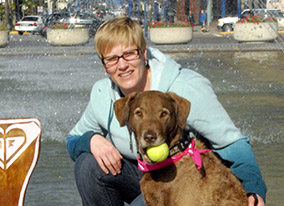Class Description
To be a good trainer an understanding of what a cue is, and what it is not, is vital. Do you really understand what a cue is? Do you attach the cue to the behavior in the most efficient way? Why does efficiency even matter? How do you deal with failure to respond to a cue? What exactly is stimulus control and why is this important to a good trainer? Let’s get training and answer those questions!
This class will be 4 weeks long and all class materials (learning modules) will be released on the first day of class. The workers in class will choose the behaviors they want to work on, and may work multiple behaviors in class.
Week 1:
Getting behavior and understanding what the function of a cue is. We will pick the behavior you want to attach a cue to, and we will discuss the trainers decisions on choosing the appropriate cue. What are the hallmarks of an effective cue? Why it matters what your cue is and how it is presented to the dog.
Week 2:
Cueing Procedure from the Bailey/Farhoody Workshops
Attaching a cue has to be one of the more important things a good trainer does. In the balance hangs all the behaviors you are going to ask you dog to perform. When attending the workshops, we learned an efficient and precise way to attach a cue to a behavior. This was life changing for me and changed forever how I viewed cues that I use!
Week 3:
Have it, have it named and now it’s time to get control of it! Stimulus control is the name of the game, can you get what you want when you want it? What happens if the behavior starts to change? Things a trainer should be looking for that will tell them if they need to work on stimulus control and what behaviors need work (it’s not always the one you think!).
Week 4:
Sequencing behaviors that have cues together. This is the heart of an obedience performance. How do you start to put your cues together? What about rewarding every behavior? How much failure is too much and what does this tell you as a trainer?




Reviews
There are no reviews yet.